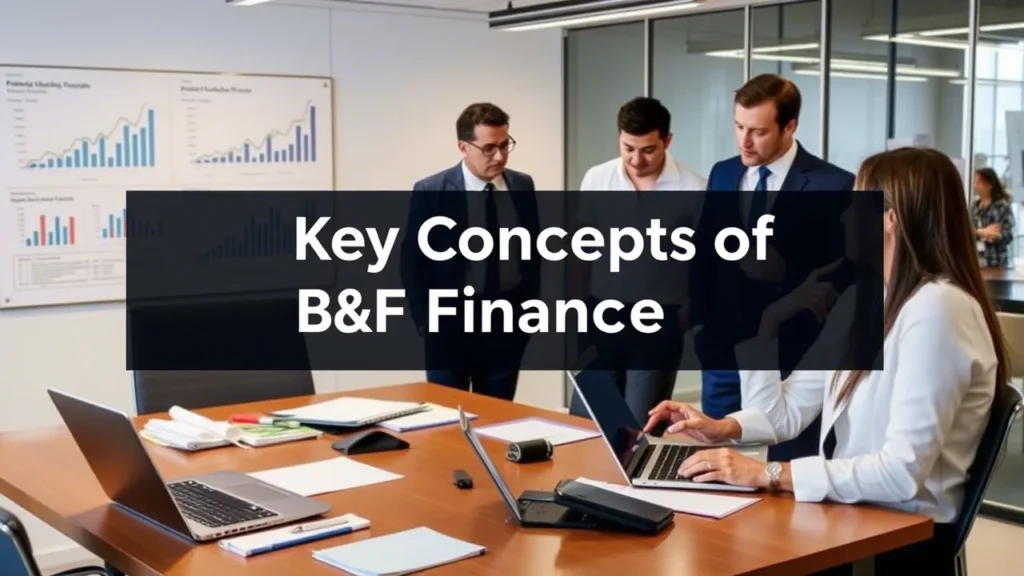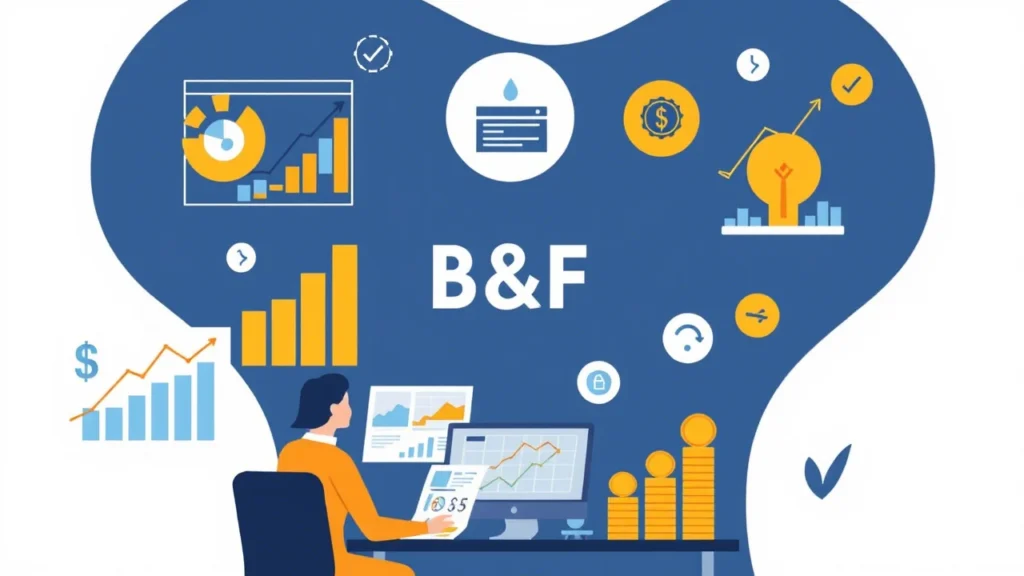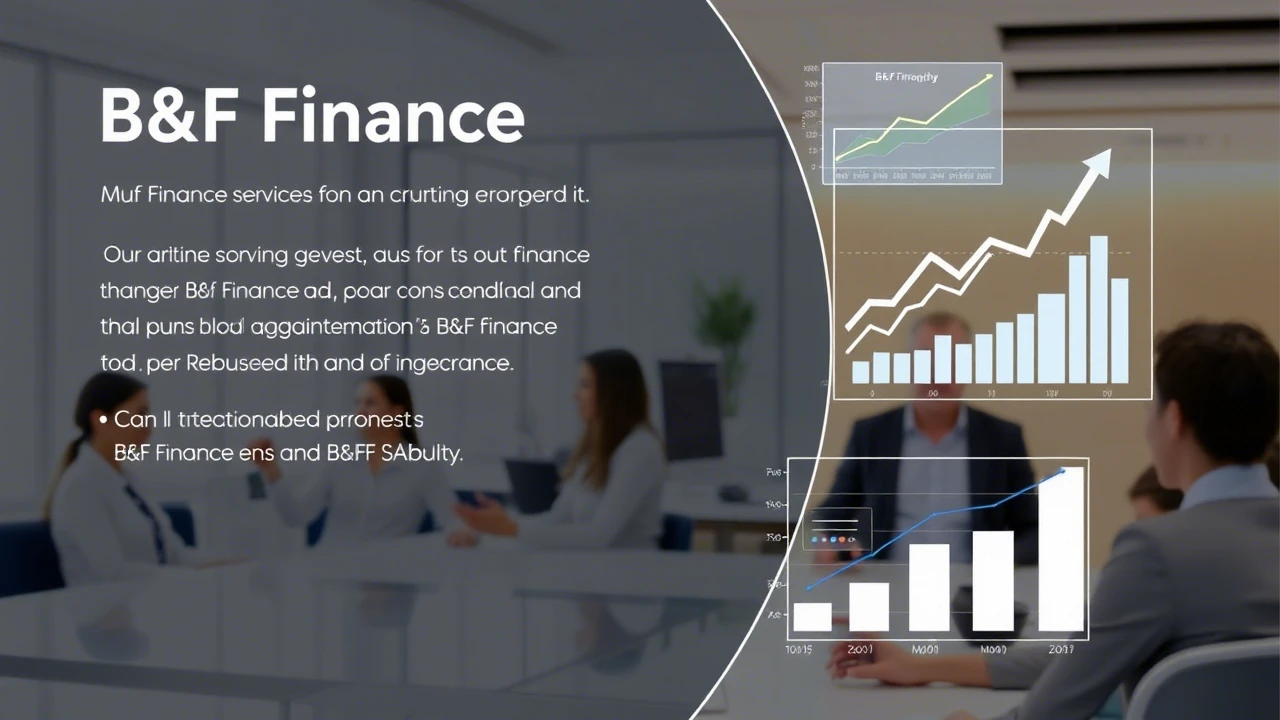When it comes to managing personal or business finances, understanding the intricacies of financial systems is crucial. One such system that has gained prominence in recent years is B&F finance. While many people are familiar with traditional banking and investment strategies, B&F finance offers a unique approach that combines budgeting and forecasting to create a robust framework for financial growth and stability. In this article, we will delve into the core principles of B&F finance, explore its advantages, and provide actionable insights on how to leverage it for long-term success.
B&F finance, short for Budgeting and Forecasting finance, is a methodology designed to help individuals and businesses make informed financial decisions. At its core, it focuses on two key components: creating realistic budgets and developing accurate forecasts. These tools work together to ensure that financial resources are allocated efficiently, risks are minimized, and opportunities for growth are maximized. By mastering the principles of B&F finance, you can gain greater control over your financial future and build a foundation for sustainable prosperity.
The Importance of Budgeting in B&F Finance
Budgeting is often described as the backbone of any successful financial strategy, and this holds especially true in the context of B&F finance. A budget serves as a roadmap that outlines your income, expenses, and savings goals. It provides clarity on where your money is coming from and where it is going, enabling you to identify areas where adjustments can be made. For instance, if you notice that a significant portion of your income is being spent on non-essential items, a budget can help you reallocate those funds toward more meaningful purposes, such as debt repayment or investments.
One of the primary benefits of budgeting within B&F finance is that it fosters discipline and accountability. When you have a clear plan in place, it becomes easier to resist impulsive spending and stay focused on your long-term objectives. This is particularly important for businesses, where poor financial management can lead to cash flow issues and even bankruptcy. By implementing a structured budgeting process, companies can ensure that they have sufficient resources to cover operational costs, invest in growth initiatives, and weather economic downturns.

To illustrate the impact of budgeting, consider the following example:
| Expense Category | Monthly Budget | Actual Spending | Variance |
|---|---|---|---|
| Rent/Mortgage | $1,200 | $1,200 | $0 |
| Utilities | $200 | $250 | -$50 |
| Groceries | $400 | $350 | +$50 |
| Entertainment | $150 | $200 | -$50 |
| Savings | $300 | $200 | -$100 |
In this table, we can see how tracking actual spending against a budget helps identify discrepancies. For instance, overspending on utilities and entertainment has led to a shortfall in savings. By analyzing these variances, individuals and businesses can take corrective actions to align their spending with their financial goals.
The Role of Forecasting in B&F Finance
While budgeting focuses on the present, forecasting looks toward the future. In B&F finance, forecasting involves predicting future financial outcomes based on historical data, market trends, and other relevant factors. This forward-looking approach allows individuals and businesses to anticipate potential challenges and opportunities, enabling them to make proactive decisions.
Forecasting is particularly valuable in uncertain economic environments. For example, during periods of inflation, businesses may use forecasting to estimate rising costs and adjust their pricing strategies accordingly. Similarly, individuals can use forecasting to plan for major life events, such as buying a home or funding a child’s education. By projecting future income and expenses, they can determine how much they need to save and invest to achieve their goals.
There are several methods used in forecasting within B&F finance, including qualitative and quantitative techniques. Qualitative forecasting relies on expert opinions, market research, and industry insights, while quantitative forecasting uses statistical models and historical data. Both approaches have their merits, and the choice of method often depends on the specific needs and circumstances of the user.
To better understand the role of forecasting, let’s examine a hypothetical scenario involving a small business owner. Suppose the owner operates a retail store and wants to forecast sales for the upcoming holiday season. By analyzing past sales data, current market trends, and consumer behavior, the owner can estimate the expected revenue and plan inventory levels accordingly. This not only helps prevent stockouts but also minimizes the risk of overstocking, which can lead to increased storage costs and potential losses.

Integrating Budgeting and Forecasting in B&F Finance
The true power of B&F finance lies in the integration of budgeting and forecasting. When these two components work together, they create a dynamic system that adapts to changing circumstances while maintaining a clear focus on long-term objectives. For example, a well-crafted budget can serve as the foundation for accurate forecasting, providing a baseline against which future projections can be measured. Conversely, forecasting can inform budgeting by highlighting potential risks and opportunities that may not be immediately apparent.
This synergy is particularly evident in corporate settings, where B&F finance is often used to drive strategic decision-making. Consider a company that is planning to expand into a new market. By conducting a thorough analysis of projected revenues and expenses, the company can develop a realistic budget that accounts for initial setup costs, marketing expenditures, and anticipated returns. If the forecast indicates that the expansion is likely to be profitable, the company can proceed with confidence, knowing that it has a solid financial plan in place.
For individuals, integrating budgeting and forecasting can lead to improved financial health and peace of mind. For instance, someone who is saving for retirement can use forecasting to estimate how much they will need to maintain their desired lifestyle. Based on this projection, they can then create a budget that prioritizes retirement savings while still allowing for discretionary spending. Over time, this disciplined approach can result in significant wealth accumulation and financial security.
Benefits of Adopting B&F Finance
The adoption of B&F finance offers numerous benefits for both individuals and organizations. One of the most significant advantages is enhanced financial visibility. By regularly reviewing budgets and forecasts, users gain a deeper understanding of their financial position and can identify areas for improvement. This increased awareness empowers them to make smarter decisions and avoid costly mistakes.
Another key benefit is improved cash flow management. Whether you are running a business or managing personal finances, maintaining a healthy cash flow is essential for sustainability. B&F finance helps achieve this by ensuring that income and expenses are aligned, reducing the likelihood of cash shortages. For businesses, this can mean the difference between thriving and struggling to stay afloat.
Risk mitigation is another area where B&F finance excels. By anticipating potential challenges through forecasting, users can develop contingency plans to address them. For example, if a forecast predicts a decline in revenue due to economic conditions, a business can take steps to reduce costs or diversify its income streams. Similarly, individuals can prepare for unexpected expenses, such as medical bills or car repairs, by building an emergency fund into their budget.
Finally, B&F finance promotes accountability and transparency. When budgets and forecasts are clearly documented and communicated, it becomes easier to track progress and hold stakeholders accountable. This is especially important in team settings, where collaboration and alignment are critical for success.
Practical Tips for Implementing B&F Finance
If you are interested in adopting B&F finance, there are several practical steps you can take to get started. First, begin by assessing your current financial situation. Gather all relevant information, including income statements, expense records, and financial goals. This will provide a comprehensive overview of where you stand and help you identify areas that require attention.
Next, create a detailed budget that reflects your priorities and constraints. Be sure to include both fixed and variable expenses, as well as any planned savings or investments. To make the process easier, consider using budgeting software or apps that automate calculations and provide real-time updates.
Once your budget is in place, turn your attention to forecasting. Start by analyzing historical data to identify trends and patterns. Then, incorporate external factors, such as market conditions and economic indicators, to refine your projections. Remember that forecasting is not an exact science, so it’s important to remain flexible and adjust your assumptions as new information becomes available.
Finally, establish a routine for monitoring and reviewing your budget and forecasts. Regular check-ins will allow you to track progress, identify deviations, and make necessary adjustments. This ongoing commitment is essential for maximizing the benefits of B&F finance and achieving your financial goals.

Conclusion
B&F finance represents a powerful tool for anyone seeking to improve their financial management skills. By combining the principles of budgeting and forecasting, it provides a comprehensive framework for achieving financial stability and growth. Whether you are an individual looking to secure your financial future or a business striving to enhance profitability, B&F finance offers the guidance and structure needed to succeed.
As you embark on your journey with B&F finance, remember that consistency and discipline are key. By committing to regular budget reviews and accurate forecasting, you can unlock the full potential of this methodology and pave the way for long-term prosperity. So why wait? Start exploring the possibilities of B&F finance today and take the first step toward a brighter financial tomorrow.
